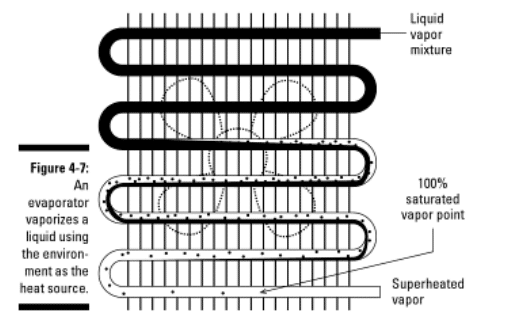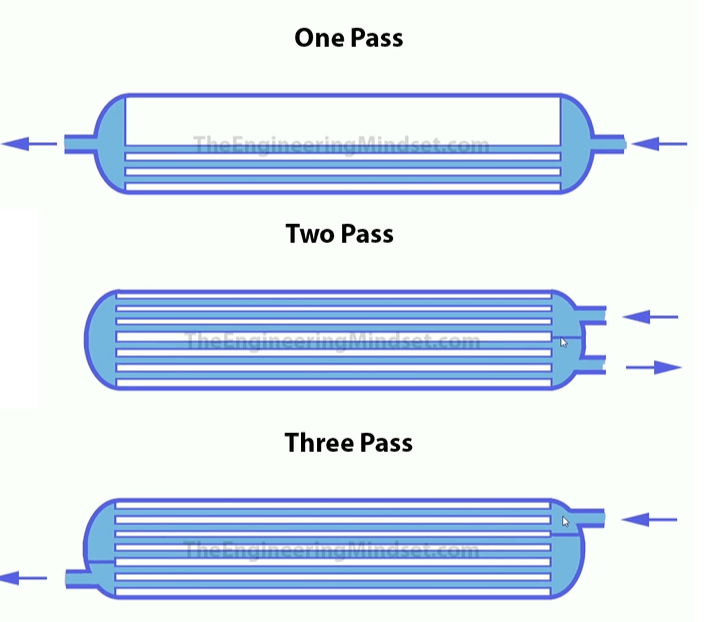
如果你也在 怎样代写热力学Thermodynamics 这个学科遇到相关的难题,请随时右上角联系我们的24/7代写客服。热力学Thermodynamics是物理学的一个分支,涉及热、功和温度,以及它们与能量、熵以及物质和辐射的物理特性的关系。这些数量的行为受热力学四大定律的制约,这些定律使用可测量的宏观物理量来传达定量描述,但可以用统计力学的微观成分来解释。热力学适用于科学和工程中的各种主题,特别是物理化学、生物化学、化学工程和机械工程,但也适用于其他复杂领域,如气象学。
热力学Thermodynamics从历史上看,热力学的发展源于提高早期蒸汽机效率的愿望,特别是通过法国物理学家萨迪-卡诺(1824年)的工作,他认为发动机的效率是可以帮助法国赢得拿破仑战争的关键。苏格兰-爱尔兰物理学家开尔文勋爵在1854年首次提出了热力学的简明定义,其中指出:”热力学是关于热与作用在身体相邻部分之间的力的关系,以及热与电的关系的课题。” 鲁道夫-克劳修斯重述了被称为卡诺循环的卡诺原理,为热学理论提供了更真实、更健全的基础。他最重要的论文《论热的运动力》发表于1850年,首次提出了热力学的第二定律。1865年,他提出了熵的概念。1870年,他提出了适用于热的维拉尔定理。
热力学Thermodynamics代写,免费提交作业要求, 满意后付款,成绩80\%以下全额退款,安全省心无顾虑。专业硕 博写手团队,所有订单可靠准时,保证 100% 原创。最高质量的热力学Thermodynamics作业代写,服务覆盖北美、欧洲、澳洲等 国家。 在代写价格方面,考虑到同学们的经济条件,在保障代写质量的前提下,我们为客户提供最合理的价格。 由于作业种类很多,同时其中的大部分作业在字数上都没有具体要求,因此热力学Thermodynamics作业代写的价格不固定。通常在专家查看完作业要求之后会给出报价。作业难度和截止日期对价格也有很大的影响。
avatest™帮您通过考试
avatest™的各个学科专家已帮了学生顺利通过达上千场考试。我们保证您快速准时完成各时长和类型的考试,包括in class、take home、online、proctor。写手整理各样的资源来或按照您学校的资料教您,创造模拟试题,提供所有的问题例子,以保证您在真实考试中取得的通过率是85%以上。如果您有即将到来的每周、季考、期中或期末考试,我们都能帮助您!
在不断发展的过程中,avatest™如今已经成长为论文代写,留学生作业代写服务行业的翘楚和国际领先的教育集团。全体成员以诚信为圆心,以专业为半径,以贴心的服务时刻陪伴着您, 用专业的力量帮助国外学子取得学业上的成功。
•最快12小时交付
•200+ 英语母语导师
•70分以下全额退款
想知道您作业确定的价格吗? 免费下单以相关学科的专家能了解具体的要求之后在1-3个小时就提出价格。专家的 报价比上列的价格能便宜好几倍。
我们在物理Physical代写方面已经树立了自己的口碑, 保证靠谱, 高质且原创的物理Physical代写服务。我们的专家在热力学Thermodynamics代写方面经验极为丰富,各种热力学Thermodynamics相关的作业也就用不着说。

物理代写|热力学代写Thermodynamics代考|Chilling with evaporators
A refrigeration system absorbs heat from a cold environment using a heat exchanger called an evaporator. Figure 4-7 shows a liquid-vapor refrigerant mixture that is colder than the local ambient environment entering the evaporator and boiling to become a superheated vapor. Evaporators are only found in refrigeration (and heat pump) systems; they aren’t used in heat engines. A fan is used to draw air over the evaporator coils. The refrigerant flows through a tube that’s bonded to fins. The fins help improve heat transfer from the ambient air to the refrigerant. The heat transfer rate in an evaporator is found using the same equation used for a condenser:
$$
\dot{Q}=\dot{m}\left(h_{\text {out }}-h_{\mathrm{n}}\right)
$$
The only difference is that the result is positive because heat is absorbed by the fluid. The enthalpy of the fluid at the evaporator inlet is $h_{i n}$, and the enthalpy at the evaporator exit is $h_{\text {out }}$.
Consider this example, which shows you how to calculate the heat transfer rate from a refrigerant evaporator. A refrigerator evaporator has an $\mathrm{R}-134 \mathrm{a}$ liquid-vapor mixture entering at 250 kilopascals pressure with a 20-percent quality ( discuss quality in Chapter 3 ). Refrigerant leaves the evaporator as a superheated vapor at 0 degrees Celsius. The refrigerant mass flow rate is 0.005 kilogram per second. You can find the heat transfer rate of the evaporator with the following steps:
Find the liquid enthalpy, $h_f$ and the vapor enthalpy, $h_{k^{\prime}}$ at $250 \mathrm{kPa}$ for the refrigerant liquid-vapor mixture entering the evaporator.
By using Table A-7 in the appendix, you find that $h_f=194.3 \mathrm{~kJ} / \mathrm{kg}$ and $h_{\mathrm{g}}=396.1 \mathrm{~kJ} / \mathrm{kg}$.
Calculate the enthalpy of the liquid vapor mixture, $h_{\mathrm{in}}$, at 20-percent quality by using the following equations:
$$
\begin{aligned}
& h_{\mathrm{in}}=h_f+x\left(h_{\mathrm{g}}-h_f\right) \
& h_{\mathrm{in}}=194.3 \mathrm{~kJ} / \mathrm{kg}+0.2(396.1-194.3) \mathrm{kJ} / \mathrm{kg}=234.7 \mathrm{~kJ} / \mathrm{kg}
\end{aligned}
$$
Find the enthalpy $h_{\text {awt }}$ of the superheated vapor leaving the evaporator, using Table $\mathrm{A}-8$ in the appendix:
$$
h_{\text {out }}=399.8 \mathrm{~kJ} / \mathrm{kg}
$$
Calculate the heat transfer rate as follows:
$$
\dot{Q}=(0.005 \mathrm{~kg} / \mathrm{sec})[(399.8-234.7) \mathrm{kJ} / \mathrm{kg}]=0.83 \mathrm{~kW}
$$
Heat transfer to a fluid is a positive quantity.
物理代写|热力学代写Thermodynamics代考|Conservina Mass in a Closed Sustem
Every thermodynamic analysis begins by defining a system. A system describes the mass or volume you use for analysis. For example, a system can define the amount of gas contained within a piston and cylinder, the amount of air inside a football, or the amount of iced tea in a glass.
There are two basic categories of systems in thermodynamics. In a closed system, mass neither enters nor leaves the system during a process. In an open system, mass can enter and/or leave the system. This chapter focuses on closed systems. Chapter 6 addresses open systems.
Understanding how to define a system for thermodynamic analysis is important. Say you’re defining a system for a glass of iced tea. If you specify only the tea and the ice as the system, a process for that system may involve melting the ice to cool the tea. If you define the system as the ice, the tea, and the glass, a process may include melting the ice to cool the tea and the glass.
Mass, like energy, can be neither created nor destroyed, but it can change form. A solid mass can melt into a liquid, and a liquid can evaporate into a gas. Even in chemical reactions, the mass of the reactants equals the mass of the products (see Chapter 16). In each process, the mass doesn’t change. The principle of conservation of mass can be summed up as this: The net mass transferred into or out of a system equais the change in mass of a system. Mathematically, this is written as follows:
$$
m_{\mathrm{h}}-m_{\text {out }}=\Delta m_{\mathrm{sys}}
$$
The units of mass in the SI system are kilograms or grams. The conservation of mass can also be written on a rate basis with this equation:
$$
\dot{m}{\text {in }}-\dot{m}{\text {cut }}=\frac{d m_{\text {sws }}}{d t}
$$
When you see a “dot” over a variable like mass ( $m$ ), it means the variable is on a rate basis or per unit time. The units for mass flow rate are kilograms per second.
Because no mass flows in or out of a closed system during a thermodynamic process, the conservation of mass equation simplifies to the following equation: $m_{s \mathrm{~s}}=$ constant.

热力学代写
物理代写|热力学代写Thermodynamics代考|Chilling with evaporators
制冷系统利用一种叫做蒸发器的热交换器从寒冷的环境中吸收热量。如图4-7所示,温度低于当地环境温度的液-气混合制冷剂进入蒸发器并沸腾成为过热蒸汽。蒸发器只存在于制冷(和热泵)系统中;它们不用于热机。风扇用来将空气抽过蒸发器盘管。制冷剂流经与翅片相连的管道。翅片有助于改善从环境空气到制冷剂的热量传递。蒸发器的传热速率与冷凝器的公式相同:
$$
\dot{Q}=\dot{m}\left(h_{\text {out }}-h_{\mathrm{n}}\right)
$$
唯一的区别是结果是正的,因为热量被流体吸收了。蒸发器入口流体焓为$h_{i n}$,蒸发器出口流体焓为$h_{\text {out }}$。
考虑这个例子,它向您展示了如何计算制冷剂蒸发器的传热速率。冰箱蒸发器有$\mathrm{R}-134 \mathrm{a}$液体-蒸汽混合物进入250千帕斯卡的压力与20%的质量(讨论质量在第3章)。制冷剂在0摄氏度时以过热蒸汽的形式离开蒸发器。制冷剂质量流量为0.005 kg / s。蒸发器的换热率可按以下步骤计算:
计算进入蒸发器的制冷剂液-气混合物的液体焓$h_f$和蒸汽焓$h_{k^{\prime}}$,网址为$250 \mathrm{kPa}$。
通过使用附录中的表A-7,可以发现$h_f=194.3 \mathrm{~kJ} / \mathrm{kg}$和$h_{\mathrm{g}}=396.1 \mathrm{~kJ} / \mathrm{kg}$。
用下面的公式计算20%质量的液蒸气混合物$h_{\mathrm{in}}$的焓:
$$
\begin{aligned}
& h_{\mathrm{in}}=h_f+x\left(h_{\mathrm{g}}-h_f\right) \
& h_{\mathrm{in}}=194.3 \mathrm{~kJ} / \mathrm{kg}+0.2(396.1-194.3) \mathrm{kJ} / \mathrm{kg}=234.7 \mathrm{~kJ} / \mathrm{kg}
\end{aligned}
$$
根据附录中的表$\mathrm{A}-8$,求出离开蒸发器的过热蒸汽的焓$h_{\text {awt }}$:
$$
h_{\text {out }}=399.8 \mathrm{~kJ} / \mathrm{kg}
$$
计算传热速率如下:
$$
\dot{Q}=(0.005 \mathrm{~kg} / \mathrm{sec})[(399.8-234.7) \mathrm{kJ} / \mathrm{kg}]=0.83 \mathrm{~kW}
$$
传递给流体的热量是一个正的量。
物理代写|热力学代写Thermodynamics代考|Conservina Mass in a Closed Sustem
每一个热力学分析都是从定义一个系统开始的。系统描述了用于分析的质量或体积。例如,系统可以定义活塞和气缸内的气体量,足球内的空气量,或者玻璃杯中冰茶的量。
热力学中有两类基本的系统。在一个封闭系统中,质量在过程中既不进入也不离开系统。在开放系统中,质量可以进入或离开系统。本章主要讨论封闭系统。第6章讨论开放系统。
理解如何定义热力学分析系统是很重要的。假设你正在为一杯冰茶定义一个系统。如果您只指定茶和冰作为系统,则该系统的过程可能涉及融化冰以冷却茶。如果你把这个系统定义为冰、茶和杯子,这个过程可能包括融化冰来冷却茶和杯子。
质量和能量一样,既不能被创造也不能被毁灭,但它可以改变形式。固体可以融化成液体,液体可以蒸发成气体。即使在化学反应中,反应物的质量也等于生成物的质量(见第16章)。在每一个过程中,质量都不变。质量守恒原理可以概括为:传递给系统或从系统传递出去的净质量等于系统质量的变化量。数学上,这可以写成如下:
$$
m_{\mathrm{h}}-m_{\text {out }}=\Delta m_{\mathrm{sys}}
$$
国际单位制中质量的单位是千克或克。质量守恒也可以用速率的形式写成如下公式:
$$
\dot{m}{\text {in }}-\dot{m}{\text {cut }}=\frac{d m_{\text {sws }}}{d t}
$$
当你看到像质量($m$)这样的变量上有一个“点”,这意味着这个变量是以速率为基础的,或者是以单位时间为单位的。质量流速的单位是千克每秒。
因为在热力学过程中没有质量流入或流出封闭系统,所以质量守恒方程简化为以下方程:$m_{s \mathrm{~s}}=$常数。

物理代写|热力学代写Thermodynamics代考 请认准UprivateTA™. UprivateTA™为您的留学生涯保驾护航。
微观经济学代写
微观经济学是主流经济学的一个分支,研究个人和企业在做出有关稀缺资源分配的决策时的行为以及这些个人和企业之间的相互作用。my-assignmentexpert™ 为您的留学生涯保驾护航 在数学Mathematics作业代写方面已经树立了自己的口碑, 保证靠谱, 高质且原创的数学Mathematics代写服务。我们的专家在图论代写Graph Theory代写方面经验极为丰富,各种图论代写Graph Theory相关的作业也就用不着 说。
线性代数代写
线性代数是数学的一个分支,涉及线性方程,如:线性图,如:以及它们在向量空间和通过矩阵的表示。线性代数是几乎所有数学领域的核心。
博弈论代写
现代博弈论始于约翰-冯-诺伊曼(John von Neumann)提出的两人零和博弈中的混合策略均衡的观点及其证明。冯-诺依曼的原始证明使用了关于连续映射到紧凑凸集的布劳威尔定点定理,这成为博弈论和数学经济学的标准方法。在他的论文之后,1944年,他与奥斯卡-莫根斯特恩(Oskar Morgenstern)共同撰写了《游戏和经济行为理论》一书,该书考虑了几个参与者的合作游戏。这本书的第二版提供了预期效用的公理理论,使数理统计学家和经济学家能够处理不确定性下的决策。
微积分代写
微积分,最初被称为无穷小微积分或 “无穷小的微积分”,是对连续变化的数学研究,就像几何学是对形状的研究,而代数是对算术运算的概括研究一样。
它有两个主要分支,微分和积分;微分涉及瞬时变化率和曲线的斜率,而积分涉及数量的累积,以及曲线下或曲线之间的面积。这两个分支通过微积分的基本定理相互联系,它们利用了无限序列和无限级数收敛到一个明确定义的极限的基本概念 。
计量经济学代写
什么是计量经济学?
计量经济学是统计学和数学模型的定量应用,使用数据来发展理论或测试经济学中的现有假设,并根据历史数据预测未来趋势。它对现实世界的数据进行统计试验,然后将结果与被测试的理论进行比较和对比。
根据你是对测试现有理论感兴趣,还是对利用现有数据在这些观察的基础上提出新的假设感兴趣,计量经济学可以细分为两大类:理论和应用。那些经常从事这种实践的人通常被称为计量经济学家。
MATLAB代写
MATLAB 是一种用于技术计算的高性能语言。它将计算、可视化和编程集成在一个易于使用的环境中,其中问题和解决方案以熟悉的数学符号表示。典型用途包括:数学和计算算法开发建模、仿真和原型制作数据分析、探索和可视化科学和工程图形应用程序开发,包括图形用户界面构建MATLAB 是一个交互式系统,其基本数据元素是一个不需要维度的数组。这使您可以解决许多技术计算问题,尤其是那些具有矩阵和向量公式的问题,而只需用 C 或 Fortran 等标量非交互式语言编写程序所需的时间的一小部分。MATLAB 名称代表矩阵实验室。MATLAB 最初的编写目的是提供对由 LINPACK 和 EISPACK 项目开发的矩阵软件的轻松访问,这两个项目共同代表了矩阵计算软件的最新技术。MATLAB 经过多年的发展,得到了许多用户的投入。在大学环境中,它是数学、工程和科学入门和高级课程的标准教学工具。在工业领域,MATLAB 是高效研究、开发和分析的首选工具。MATLAB 具有一系列称为工具箱的特定于应用程序的解决方案。对于大多数 MATLAB 用户来说非常重要,工具箱允许您学习和应用专业技术。工具箱是 MATLAB 函数(M 文件)的综合集合,可扩展 MATLAB 环境以解决特定类别的问题。可用工具箱的领域包括信号处理、控制系统、神经网络、模糊逻辑、小波、仿真等。